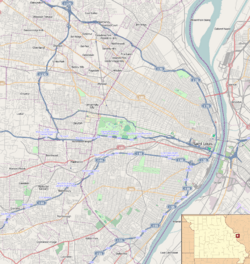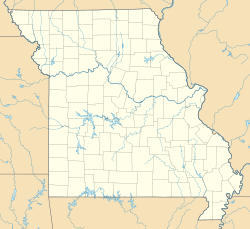Bell Telephone Building (St. Louis, Missouri) facts for kids
Quick facts for kids |
|
|
Bell Telephone Building
|
|

Bell Telephone Building as depicted in American Architect and Building News (January 1889)
|
|
| Location | 920 Olive Street St. Louis, Missouri |
|---|---|
| Built | 1889 |
| Architect | Shepley, Rutan and Coolidge |
| Architectural style | Romanesque Revival |
| NRHP reference No. | 99000936 |
| Added to NRHP | August 5, 1999 |
The Bell Telephone Building is a historic building in downtown St. Louis, Missouri. It is located at 920 Olive Street. This building was finished in 1889. It was built to hold the main telephone equipment and offices for the Bell Telephone Company.
From 1889 until 1926, it was the main place for telephone calls in St. Louis. It is the oldest telephone building still standing in the city. It might even be the first building ever built just for the telephone industry in St. Louis!
Contents
Building History and Changes
How the Bell Telephone Building Started
Before this building, the first telephone office in St. Louis was in a different building. That was back in 1878. By the late 1880s, more space was needed for all the telephone equipment.
So, construction on the Bell Telephone Building began in 1889. A famous design company from Boston called Shepley, Rutan and Coolidge created its plans. The main room for the telephone switchboard was on the top floor. At first, the building had six stories.
Growing with Telephones
Between 1890 and 1910, more and more people started using telephones. The local Bell company in St. Louis joined with other Bell companies. They formed a bigger company called Southwestern Bell by 1920.
In 1923, Southwestern Bell took over another telephone company in St. Louis. This meant even more telephone lines and equipment were needed. Because of this, a much larger building was built nearby. This new building, the Southwestern Bell Building, was finished in 1926.
New Uses for the Building
After Southwestern Bell moved out, the building found new life. It became a store and warehouse for a St. Louis printing company called S.G. Adams Stationery. This company used the building as its main store for many years.
In the early 1990s, S.G. Adams changed its business. It focused more on printing for other companies. Because of this, its retail stores closed. The Bell Telephone Building was the last retail store to close in 1994.
Modern Apartments and Shops
From 1999 to 2004, the building was completely updated. The upper floors were turned into loft apartments for people to live in. The ground floor became space for shops.
One of the first shops was City Grocers. This special market sold groceries and other things for people living downtown. It was the only grocery store in downtown St. Louis for a few years. Today, the upper floors are still used as apartments.
Building Design and Look
The Bell Telephone Building is seven stories tall. It is made of brick and red sandstone. It has large, arched sections that rise from the ground floor.
When it was first built, it only had six stories. An extra seventh story was added in 1919. It was built in the same style to match the rest of the building. This was done to create more space as the telephone company grew.
In 1940, the original storefronts on the ground level were covered. They were updated with a new stone covering. The side of the building that faces east is a plain brick wall. The roof is flat, and a low wall surrounds the top.
Why the Bell Telephone Building is Special
This building is important because it is quite rare in St. Louis. Many other buildings in the Romanesque Revival style were torn down over the years. This style uses round arches and strong, heavy stone.
The Bell Telephone Building is one of only a few buildings in St. Louis designed by the famous firm Shepley, Rutan and Coolidge. They were known for their beautiful and strong designs.





